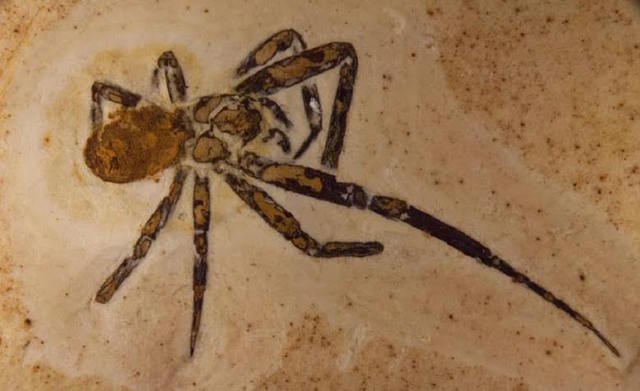| ||||||||||
Dr. Ronald P. Rogers CHIROPRACTOR Support for your body's natural healing capabilities 270-384-5554 Click here for details 


Columbia Gas Dept. GAS LEAK or GAS SMELL Contact Numbers 24 hrs/ 365 days 270-384-2006 or 9-1-1 Call before you dig Visit ColumbiaMagazine's Directory of Churches Addresses, times, phone numbers and more for churches in Adair County Find Great Stuff in ColumbiaMagazine's Classified Ads Antiques, Help Wanted, Autos, Real Estate, Legal Notices, More... 
|
ACHS, WKU grad working on PhD in Paleontology Where are they now? An Adair County High School Graduate completed his undergraduate work at Western Kentucky University and is now at the University of Kansas where he is a teaching assistant while working on a PhD. His major interest is the fascinating field of Fossil Spiders and he'll special equipment to finish his project. His need is $2,000, which he is raising using a website called "Instrumentl." If he is the first to reach one-half of his goal, the rest will be matched! CM will be posting more shortly. In the meantime, if anyone wants to be a hero and fund the balance needed to let Matt achieve his goal - if he's the one to qualify for the prize - call CM and we'll let you know how you can he the hero - 270-250-2730. In a few hours we hope to have all the details available. By Matt Downen I'm seeking a PhD at The University of Kansas and working with Dr. Paul Selden, a Distinguished Professor in Invertebrate Paleontology. My Bachelor's and Master's degrees are in geology, and I previously worked on volcanoes and meteorites. After my finishing my undergraduate degree at Western Kentucky University, I had to think long and hard about what I wanted to study in grad school. I enjoyed so many subdisciplines in geology, but later came to realize that paleontology was the way to go (My mother had already predicted this when she made my paleontologist outfit for career day in first grade)! Now most people may think of paleontologists studying dinosaurs, but I currently research fossil spiders! Many people consider these 8-legged creatures to be their worst nightmare, but spiders are truly a spectacular group with a relatively large diversity (over 45,000 species today). Fossil spiders are much rarer, but there are still many types of ancient spiders. Some of the best geologic deposits to find fossil spiders are in ancient lakes. For my PhD research, I will be looking at fossil spiders from several ancient lake deposits from Colorado, Brazil, and China which are approximately 50 million years old, 100 million years old, and 170 million years old, respectively. My research has two main components: 1) looking at spider biodiversity through time and 2) looking at how spiders are preserved in lake deposits and what they can reveal about ancient environments. In the first project, I will be using a scanning electron microscope to look at the tiny hairs of fossil spiders, and I will be using a CT-scanner to create a 3-D reconstruction of an exceptionally preserved fossil spider. In the second project, I will be investigating the how fossil spiders are related to the salinity of ancient lakes. Spiders that die in freshwater lakes typically have their legs extended outward. In contrast, spiders in very salty lakes tend to curl their legs very tightly. Salinity is closely connected to climate, so data such as this is very helpful in understanding how climate has changed. Both of these projects will help us understand the evolutionary history of spiders, and how ancient environments have changed through time. Right now, I'm competing in a crowd funding competition through a website called Instrumentl. It's a site for scientists to raise funds for their research through donations. I am participating in the Fossil Challenge to see who can raise 50% of their funding goal first. The winner gets an extra $500 toward their research. I plan on using the funds to pay for the cost of using the electron microscope and CT-scanner and for traveling to the University of Boulder Colorado Natural History Museum to use more fossil spider specimens. This is just the beginning of my projects, and over the next few years I'll continue my research and get my PhD. In addition to my research, I am the head teaching assistant for the introductory geology laboratories. This is probably the best teaching assignment I could receive because I get to talk about so many different aspects of geology to so many different students, many of which would not otherwise get exposed to such a cool science. I just started my PhD, but I already know that I want to continue to pursue academia and share the amazing history of our planet with everyone! - Matt Downen This story was posted on 2015-11-09 15:04:48
Printable: this page is now automatically formatted for printing.
Have comments or corrections for this story? Use our contact form and let us know.
More articles from topic News:
ADAIR BAND encore performance postponed to 16 Nov 2015 Gov. Beshear announces 200 new jobs in Louisville, KY Gov. Beshear Orders Flags to Half-staff Mr. Wm. P. (Bill) Tucker, Taylor Co., KY (1939-2015) All veterans invited to VFW Veterans Day Breakfast Creative Winter Containers topic at 12 Nov 2015 ACGC meeting Sunday night singing: The Devotions at Knifley 29 Nov 2015 Mr. Dwight Meyer had awe-inspiring traits of character A Tribute to Dwight Meyer Friday was a black day for Adair County's close knit Ellis Clan View even more articles in topic News |



|
||||||||
|
| ||||||||||
|
Quick Links to Popular Features
Looking for a story or picture? Try our Photo Archive or our Stories Archive for all the information that's appeared on ColumbiaMagazine.com. | ||||||||||
|
Contact us: Columbia Magazine and columbiamagazine.com are published by Linda Waggener and Pen Waggener, PO Box 906, Columbia, KY 42728. Please use our contact page, or send questions about technical issues with this site to webmaster@columbiamagazine.com. All logos and trademarks used on this site are property of their respective owners. All comments remain the property and responsibility of their posters, all articles and photos remain the property of their creators, and all the rest is copyright 1995-Present by Columbia Magazine. Privacy policy: use of this site requires no sharing of information. Voluntarily shared information may be published and made available to the public on this site and/or stored electronically. Anonymous submissions will be subject to additional verification. Cookies are not required to use our site. However, if you have cookies enabled in your web browser, some of our advertisers may use cookies for interest-based advertising across multiple domains. For more information about third-party advertising, visit the NAI web privacy site.
| ||||||||||




















































